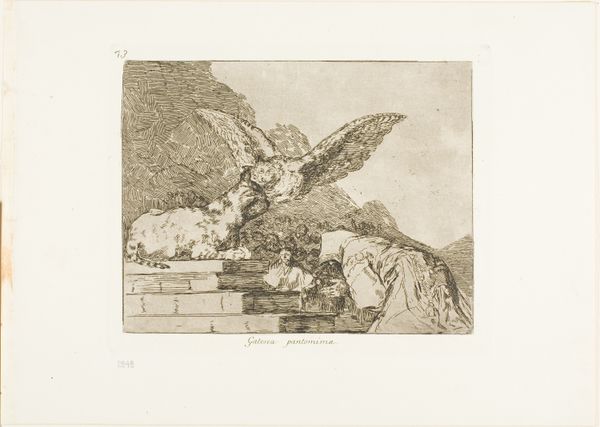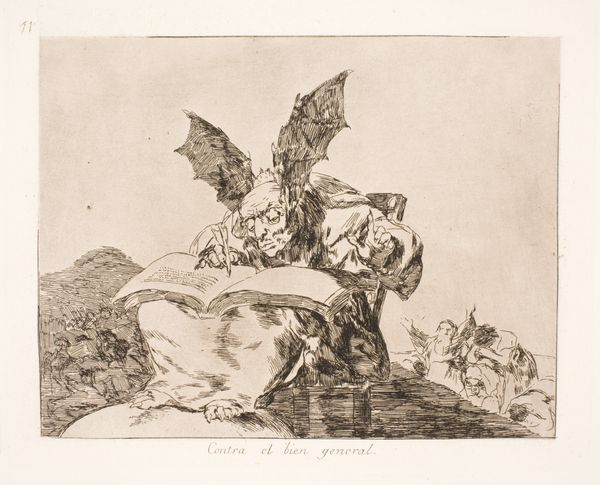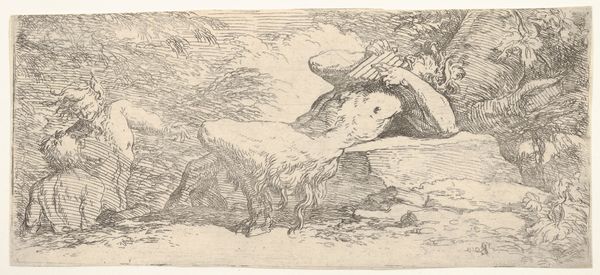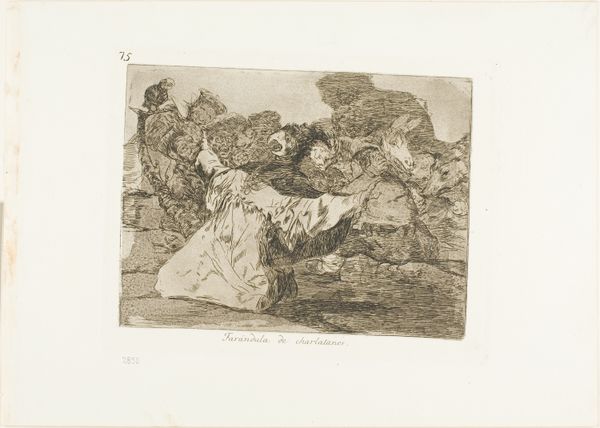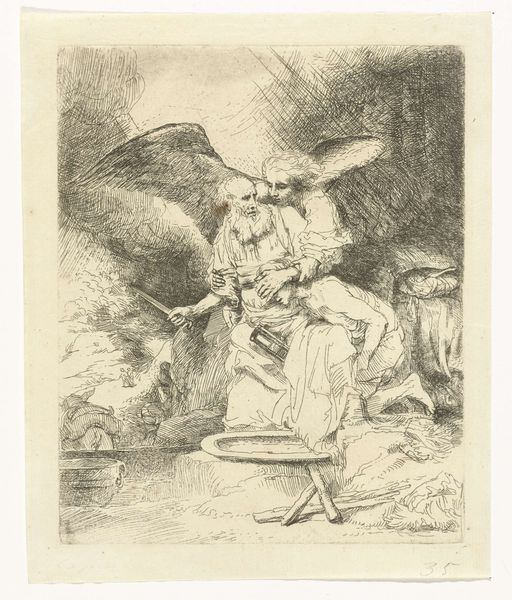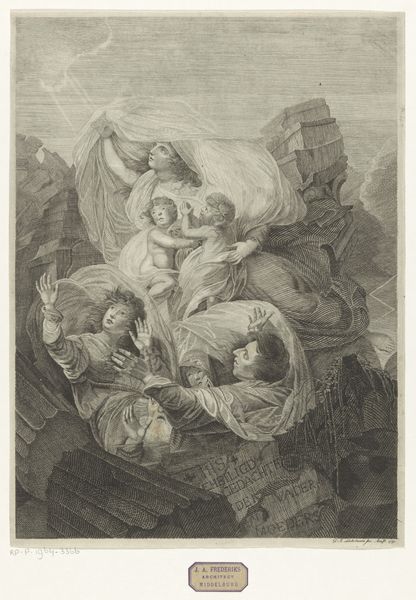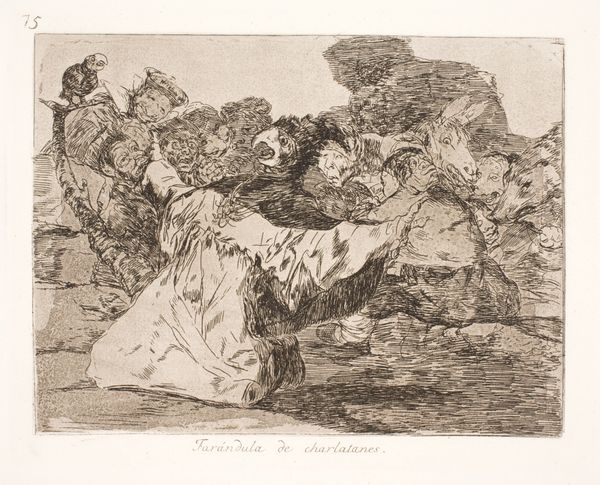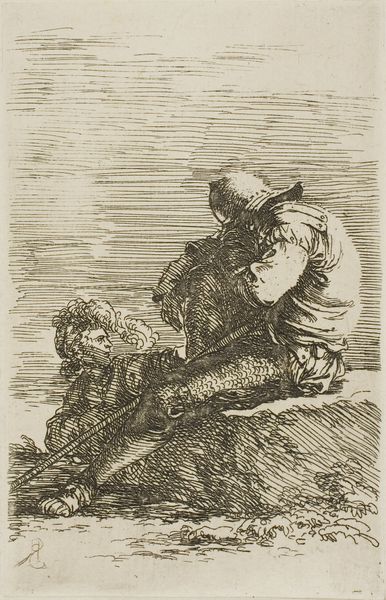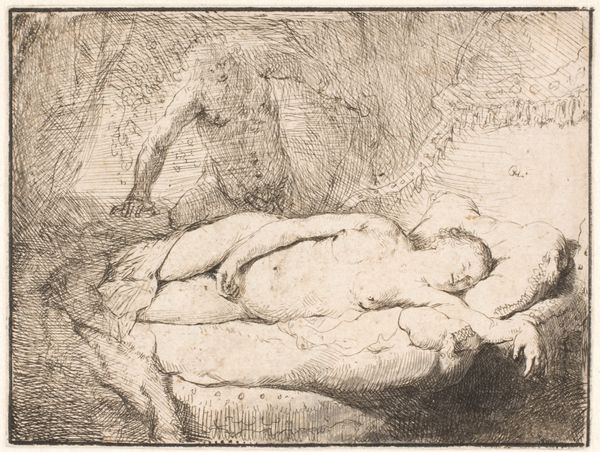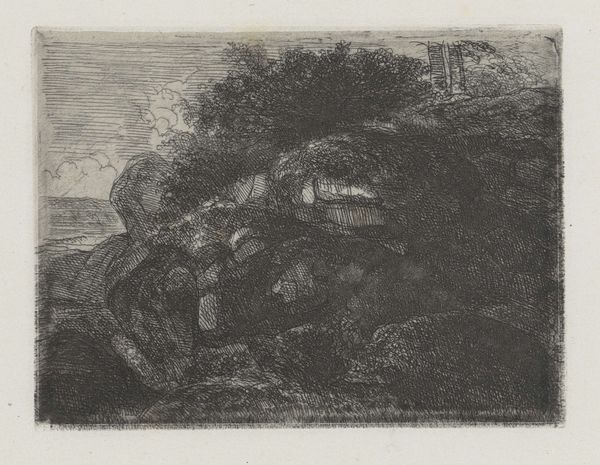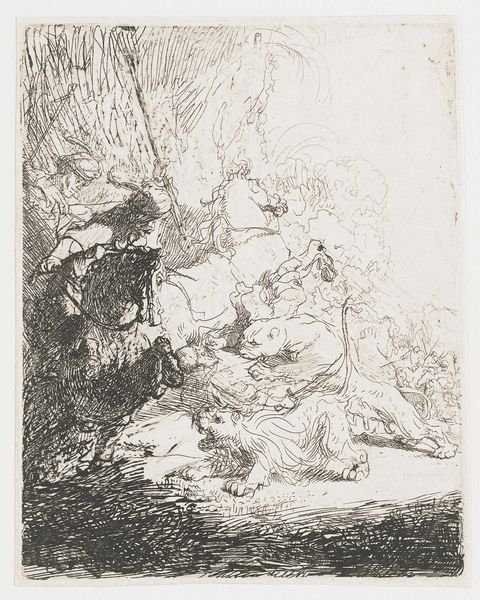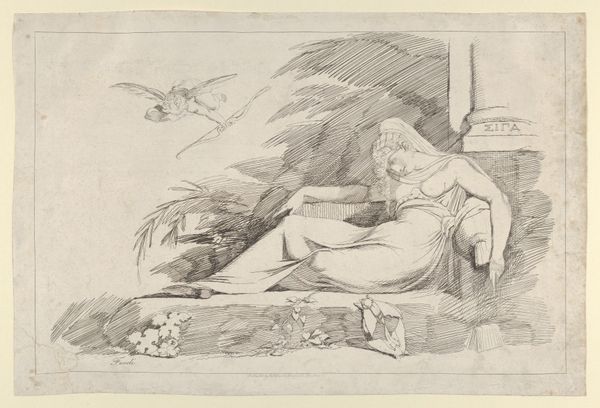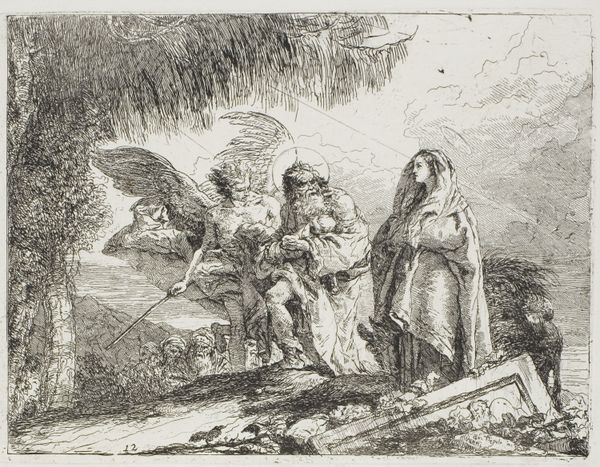
aquatint, print, etching, engraving
#
aquatint
#
narrative-art
# print
#
etching
#
figuration
#
romanticism
#
line
#
history-painting
#
engraving
Dimensions: 175 mm (height) x 213 mm (width) (plademaal), 153 mm (height) x 198 mm (width) (billedmaal)
Editor: This is "Kattepantomime (73)" by Francisco de Goya, created between 1810 and 1820. It’s a print made using etching and aquatint. I find the scene quite strange; it has this dark, unsettling quality. What do you see in this piece? Curator: I see a layered commentary on power, superstition, and the fragility of reason during a turbulent historical period. The "cat pantomime" itself – the large cat with the owl – stages the triumph of irrationality and perhaps, even the grotesque masquerade of power itself. Think of Goya living through the Napoleonic wars, witnessing immense social and political upheaval. What symbols strike you as particularly potent within that context? Editor: I guess the cat's size and the owl looming over the scene definitely suggest a disruption of natural order. The figures below seem almost like spectators, powerless and subdued. So it’s less about cute cats and more about critiquing the powerful of the time? Curator: Precisely! Consider how Goya often used animals to symbolize human follies. The cat, elevated, almost enthroned, might represent a corrupt ruling class, while the owl – traditionally associated with wisdom – here seems menacing, perverted. It asks us to confront how symbols can be weaponized to manipulate and control. How might we relate this to today's political landscape? Editor: That’s a powerful comparison. The distortion of symbols is all around us, like…when political groups cherry-pick historical moments to justify current actions. Curator: Exactly. And the figures huddled below? They embody the silenced voices, the oppressed masses. The print compels us to ask: who benefits from this chaotic performance, and who suffers? Editor: It really reframes the work. I thought it was just weird imagery, but it's actually a stark reflection on power dynamics and the subversion of reason. Thank you. Curator: My pleasure. The piece challenges us to actively question and deconstruct the narratives we are presented with. It shows us that symbols and traditions can cloak injustices.
Comments
No comments
Be the first to comment and join the conversation on the ultimate creative platform.
